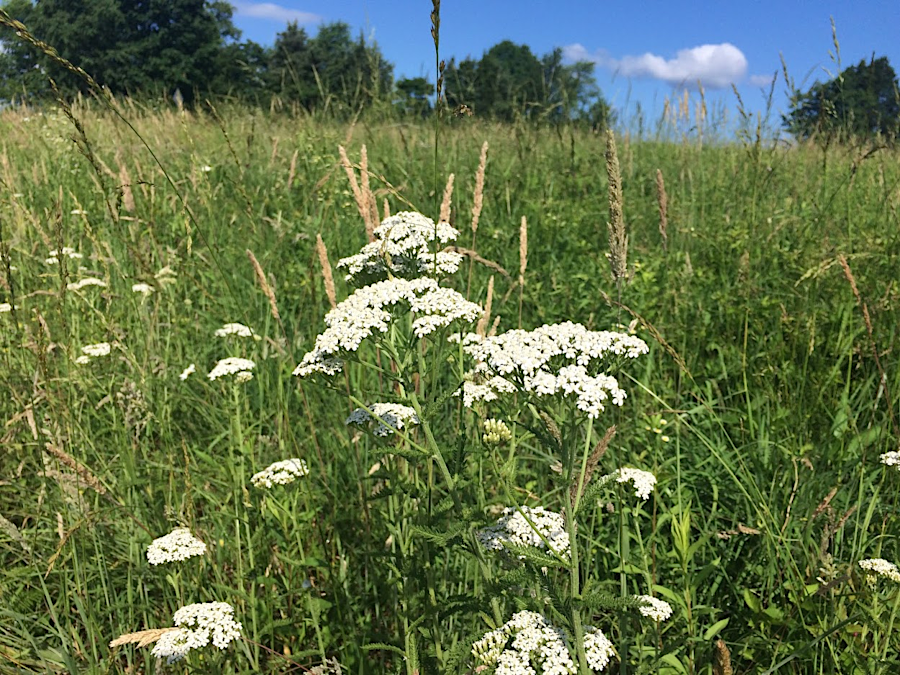
yarrow (Achillea millefolium) is a non-native species that has become naturalized across Virginia
Native plants evolved in Virginia, or migrated here through natural processes without human assistance. Corn and tobacco were brought to Virginia by Native Americans, but those species are not "native" to Virginia. Soybeans and kudzu are two of many species brought intentionally by humans after colonization, so they are non-native rather than native plants.
Not all plants in "wild woods" or fields are native. Some species have escaped cultivation and become naturalized, including Queen Anne's Lace and Bradford pear trees. These species are common in unmanaged landscapes today, but are still "introduced" rather than "native" plants.
Some species have arrived naturally in Virginia in recent times, including the coyote. It took advantage of human-caused habitat changes and extirpation of wolves, but still qualifies as a native species.
Native plants typically are the preferred food for insects and other animals that have co-evolved together. Plants form the base of the food chain, so areas with many native species will generate more food for local animals than areas filled with non-native plants. Milkweeds provide food for monarch butterflies; petunias do not.
A pair of Carolina Chickadees raising a brood of five nestlings in the springtime will collect 6,000-9,000 caterpillars, as the babies constantly demand to be fed. In suburban neighborhoods where yards are planted with native species, especially oak tree, insect larvae are readily available. In neighborhoods with manicured lawns and non-native species, birds struggle to find enough food and springtime may be silent.1

yarrow (Achillea millefolium) is a non-native species that has become naturalized across Virginia